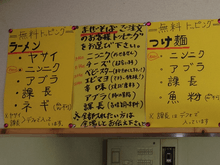Reference mark
The reference mark or reference symbol "※" is a typographic mark or word used in Chinese, Japanese and Korean (CJK) writing.
| ※ | |
|---|---|
Reference mark | |
| In Unicode | U+203B ※ REFERENCE MARK (HTML ※) (komejirushi, chamgopyo) |
| Related | |
| See also | U+002A * ASTERISK (HTML * · *, *) |

The symbol was used historically to call attention to an important sentence or idea, such as a prologue or footnote.[1] As an indicator of a note, the mark serves the exact same purpose as the asterisk in English. However, in Japanese usage, the note text is placed directly into the main text immediately after the komejirushi symbol, rather than at the bottom of the page or end of chapter as is the case in English writing.
Names
The Japanese name, komejirushi (Japanese: こめじるし; 米印, pronounced [komedʑiꜜɾɯɕi], lit. 'rice symbol'), refers to the symbol's visual similarity to the kanji for "rice" (米).[2]
In Korean, the symbol's name, chamgopyo (Korean: 参考表; 참고표), simply means "reference mark". Informally, the symbol is often called danggujangpyo (당구장표; lit. 'billiard hall mark'), as it is often used to indicate the presence of pool halls, due to its visual similarity to two crossed cue sticks and four billiard balls.
Unicode
In Unicode, the symbol has code point U+203B ※ REFERENCE MARK (HTML ※)
References
- Jan M. Ziolkowski (2018). The Juggler of Notre Dame and the Medievalizing of Modernity. p. 47. ISBN 1783744367.
[…] The Japanese komejirushi (“rice symbol”), so called for its similarity to the kanji for kome (“rice”) and used in Japanese writing to denote an important sentence or thought.
- Japanese in a Flash. 2.